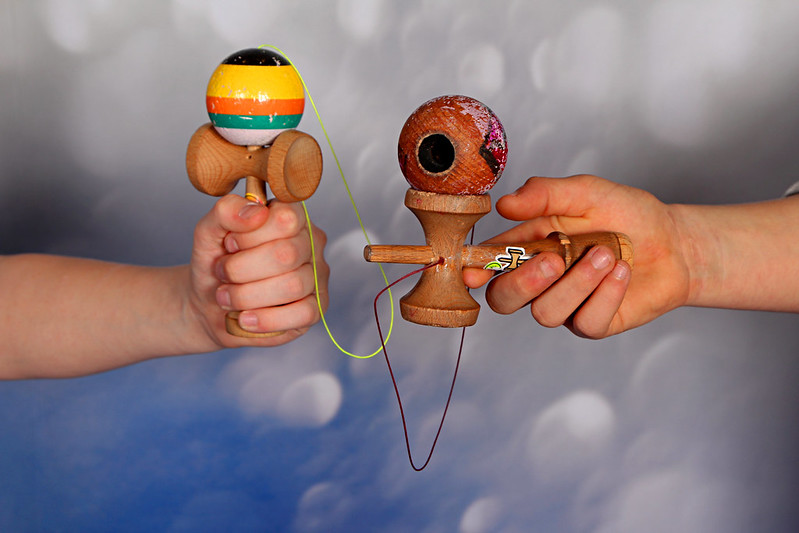
More Traditional Japanese Toys and Games
Japan, like other countries, has many traditional toys and games that have kept generations of children amused since olden times. Some traditional Japanese toys still remain popular among the young and old today, and lots of these are much in demand during the New Year holidays.
Kendama
Some traditional Japanese toys include:
Kendama (けん玉) – this toy has three cups and a spike that fits into the hole in the ball. It is similar to the classic cup-and-ball game: the object is to catch one object with another where both are joined with a string.
The kendama was introduced to Japan through the Silk Road sometime in 1777 when Nagasaki was the only port open to foreign trade. The kendama was initially an adult’s drinking game where a player who made a mistake was forced to have another drink. The game grew more popular during the Edo period (1600-1868).
In 1919, Hamaji Egusa applied for a patent on the “ball and cup” style toy. The size and proportions of the toy were later altered and standardized. Hatsukaichi City in Hiroshima Prefecture is considered the birthplace of the modern kendama. Kendama competitions are periodically held in Japan.
Fuku warai – a game usually played during New Year. It is similar to the game pin-the-tail-on-the-donkey. The game involves blindfolded players having an outline of a face on the floor in front of them, but a face without any features. The main object of the game is to place paper cutouts of eyes, mouth, and nose on the face.
Originally, only one style of face was used for the game, a comical round face of a woman. This game became popular during the late Edo period and soon enough, people began playing fuku warai as a New Year’s game during the Taisho era (1912-1926). Over the years, other types of faces were used including popular actors, anime characters, and the like.
Daruma otoshi – or “The Falling Buddha,” is a traditional Japanese toy based on the daruma doll modeled after Bodhidharma, the founder of Zen Buddhism. Usually made of wood, it is tall and cylindrical with five separate stacked pieces in different primary colors. The head sits at the very top. The game is to use a small wooden hammer to knock away each section starting from the bottom without disturbing the rest of the stack until only the head remains.
